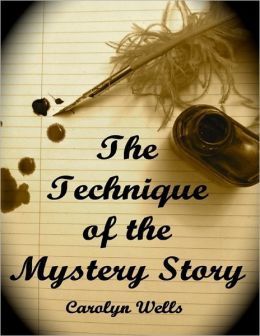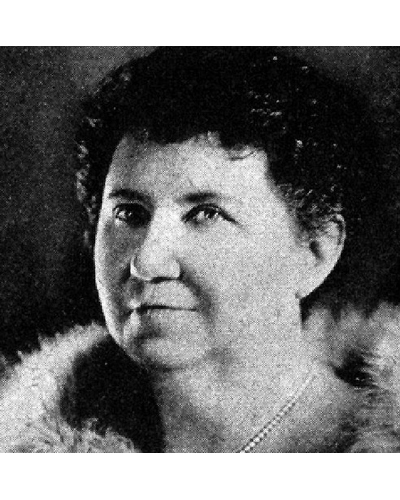
The Technique of the Mystery Story
1913
First Published
3.33
Average Rating
403
Number of Pages
A complete practical guide for detective and mystery story writers of today. How to arrange, invent, plot out, develop and narrate ingenious, convincing, and baffling stories of crime. CONTENTS: CHAPTER I—THE ETERNAL CURIOUS
- The Inquisition into the Curious is Universal
- Early Riddles
- The Passion for Solving Mysteries CHAPTER II—THE LITERATURE OF MYSTERY
- The Rightful Place of the Mystery Story in Fiction
- The Mystery Story Considered as Art
- The Claims of Antagonists and Protagonists CHAPTER III—THE HISTORY OF MYSTERY
- Ancient Mystery Tales CHAPTER IV—GHOST STORIES
- A Working Classification
- The Ghost Story
- Famous Ghost Stories
- The Humorous Ghost Story CHAPTER V—RIDDLE STORIES
- Some Notable Riddle Stories
- The Nature of the Riddle Story and Its Types CHAPTER VI—DETECTIVE STORIES
- What Is a Detective Story
- Rise of the Detective Story
- The Detective—Fictive and Real
- Fiction versus Fact
- The Interest of the Detective Story
- A Summing Up CHAPTER VII—THE DETECTIVE
- The Real Detective and His Work
- Fictive Detective Material
- The Transcendent Detective
- Pioneer Detectives of Fiction
- Recent Detectives of Fiction
- The Scientific Detective of Fiction
- The New Psychology in Detective Stories
- Other Types CHAPTER VIII—DEDUCTION
- Ratiocination in Early Detective Stories
- Deduction Used in Every-day Life
- The Analytical Element in the Detective Story
- Poe's Detective—The Prototype
- The Detective in the Novel CHAPTER IX—APPLIED PRINCIPLES
- The Detectives of Poe, Doyle, and Gaboriau
- Individuality of these Detectives
- The Real Sherlock Holmes CHAPTER X—THE RATIONALE OF RATIOCINATION
- Sherlock Holmes' Method
- Lecoq's Method
- Other Methods
- Holmes' Method Evaluated
- The Inductive and the Deductive Methods
- Two Striking Examples CHAPTER XI—CLOSE OBSERVATION
- The Search for Clues
- The Bizarre in Crime
- The Value of the Trivial
- The Tricks of Imitation CHAPTER XII—OTHER DETECTIVES OF FICTION
- Some Original Traits
- Two Unique Detectives CHAPTER XIII—PORTRAITS
- Some Early Detective Portraits
- Some More Modern Portraits
- Some Less Known Portraits
- Idiosyncrasies of Fictional Detectives
- Favorite Phrases of Detectives CHAPTER XIV—DEVIOUS DEVICES
- Snow and Rain
- Some Particularly Hackneyed Devices
- Devices Which Are Not Plausible CHAPTER XV—FOOTPRINTS AND FINGERPRINTS
- The Omnipresence of Footprints
- Other Miraculous Discoveries
- Remarkable Deductions from Footprints
- Fingerprints and Teeth-marks CHAPTER XVI—MORE DEVICES
- Tabulated Clues
- Worn-out Devices
- The Use of Disguise
- Other "Properties" CHAPTER XVII—FAKE DEVICES
- The "Trace" Fallacy
- The Destruction of Evidence
- False Hypotheses
- Errors of Fact and of Inference
- The Use of Illustrative Plans
- The Locked and Barred Room CHAPTER XV—MURDER IN GENERAL
- Murder Considered in the Abstract
- Murder as a Fine Art
- The Murder Theme
- The Robbery Theme
- The Mysterious Disappearance CHAPTER XIX—PERSONS IN THE STORY
- The Victim
- The Criminal
- Faulty Portrayal of the Criminal
- The Secondary Detective
- The Suspects
- The Heroine and the Element of Romance
- The Police 8. The Supernumeraries CHAPTER XX—THE HANDLING OF THE CRIME CHAPTER XXI—THE MOTIVE CHAPTER XXII—EVIDENCE
- The Coroner
- The Inquest
- The Witnesses
- Presentation of the Evidence
- Circumstantial Evidence
- Deductions from Evidence
- Deductions from Clues
- Evidence by Applied Psychology
- Direct Observation
- Exactness of Detail
- Theories of Evidence CHAPTER XXIII—STRUCTURE
- Length
- The Short-Story and the Novel
- Singleness of Plot in the Detective Story
- The Question of Length
- The Narrator in the Detective Story
- The Setting CHAPTER XXIV—PLOTS
- The Plot is the Story
- Constructing the Plot
- Maintaining Suspense
- Planning the Story
- The Question of Humor
- Some Unique Devices CHAPTER XXV—FURTHER ADVICES
- The Use of Coincidences
- The Use of Melodrama
- Dullness
- Unique Plots and their Solubility
- Women as Writers of Detective Stories CHAPTER XXVI—FINAL ADVICES
- General Qualities of the Detective Story
- Correctness
- Names
- Titles
Avg Rating
3.33
Number of Ratings
18
5 STARS
22%
4 STARS
22%
3 STARS
33%
2 STARS
11%
1 STARS
11%
goodreads
Author

Carolyn Wells
Author · 73 books
Carolyn Wells was a prolific writer for over 40 years and was especially noted for her humor, and she was a frequent contributor of nonsense verse and whimsical pieces to such little magazines as Gelett Burgess' The Lark, the Chap Book, the Yellow Book, and the Philistine. Librarian note: There is more than one author in the Goodreads database with this name.